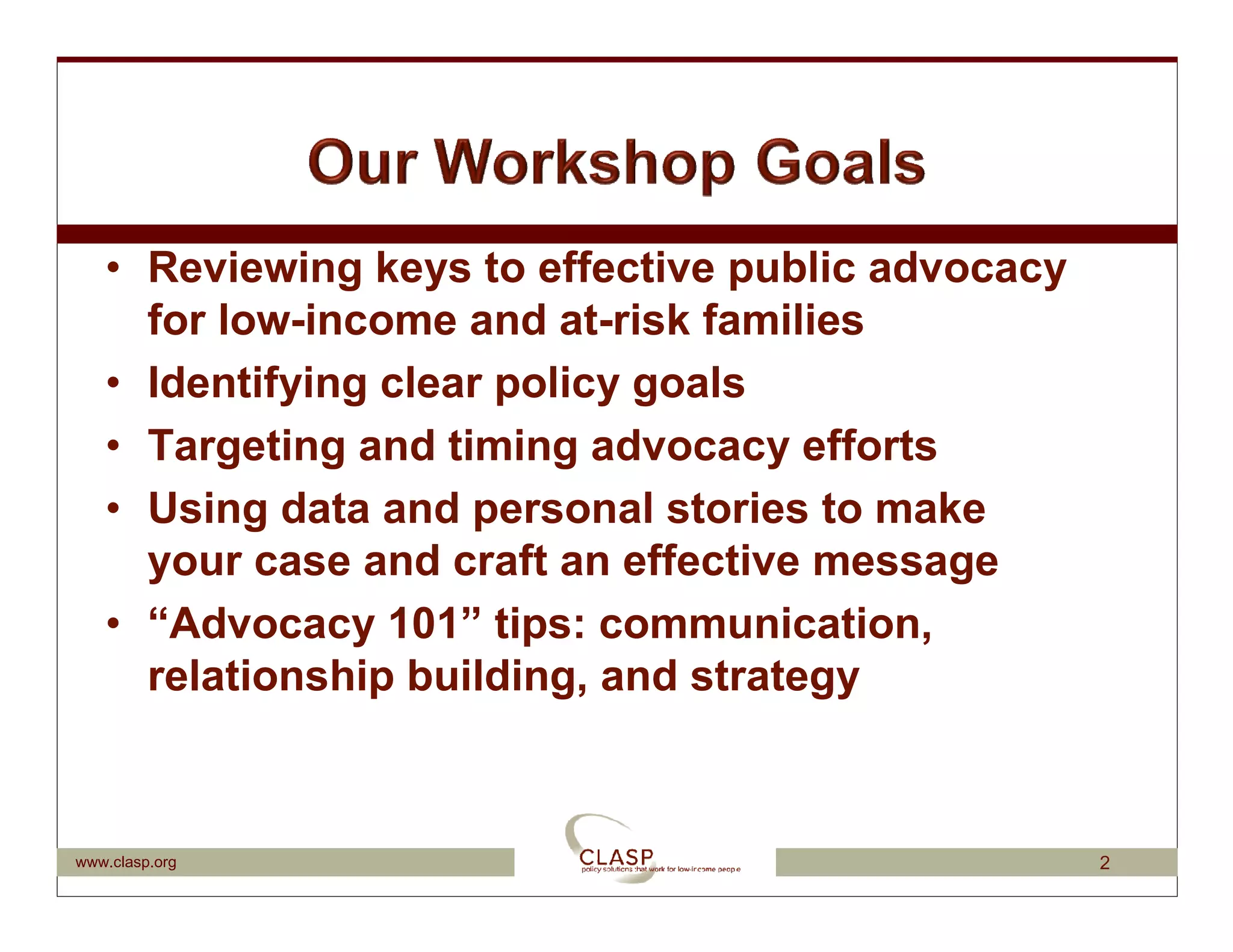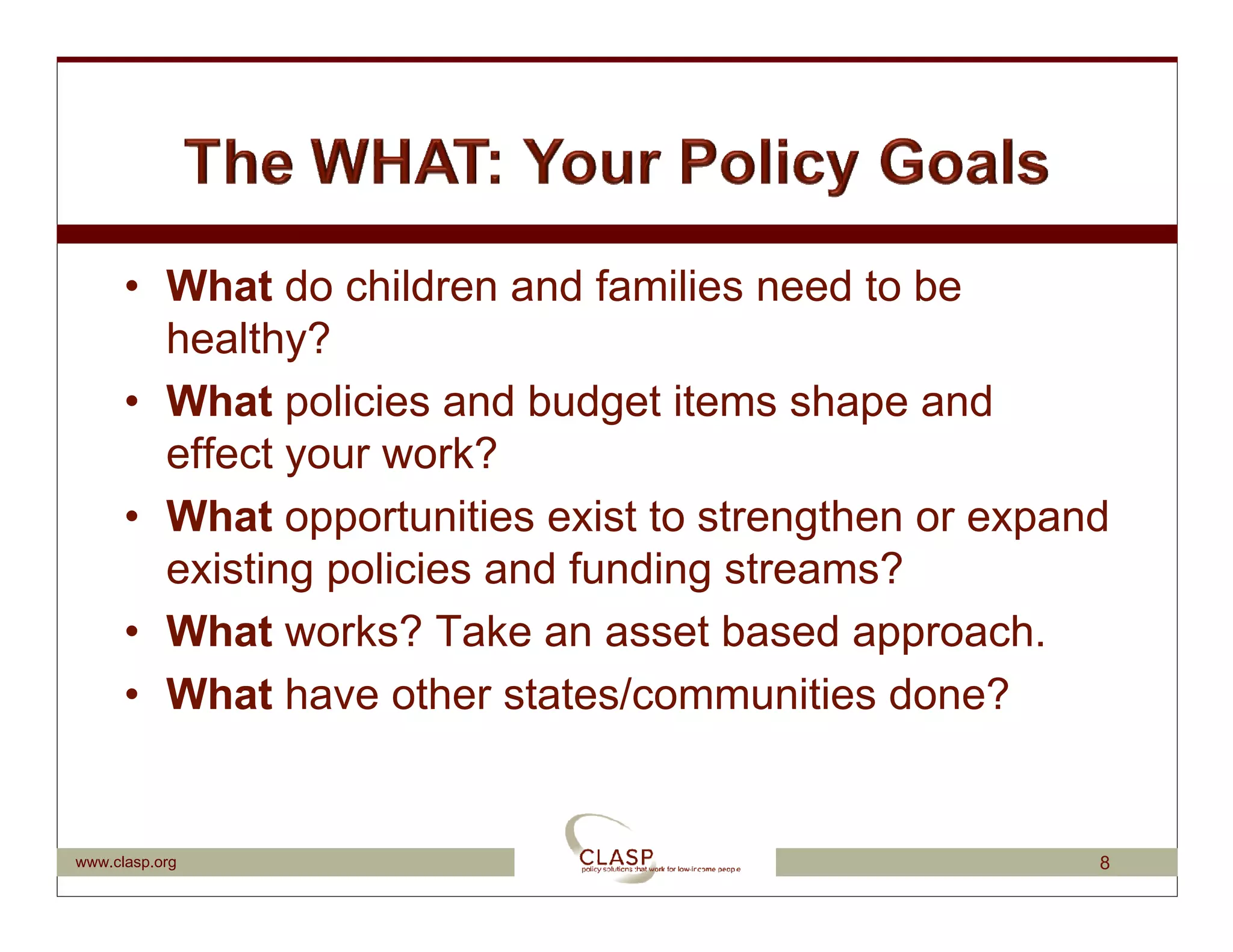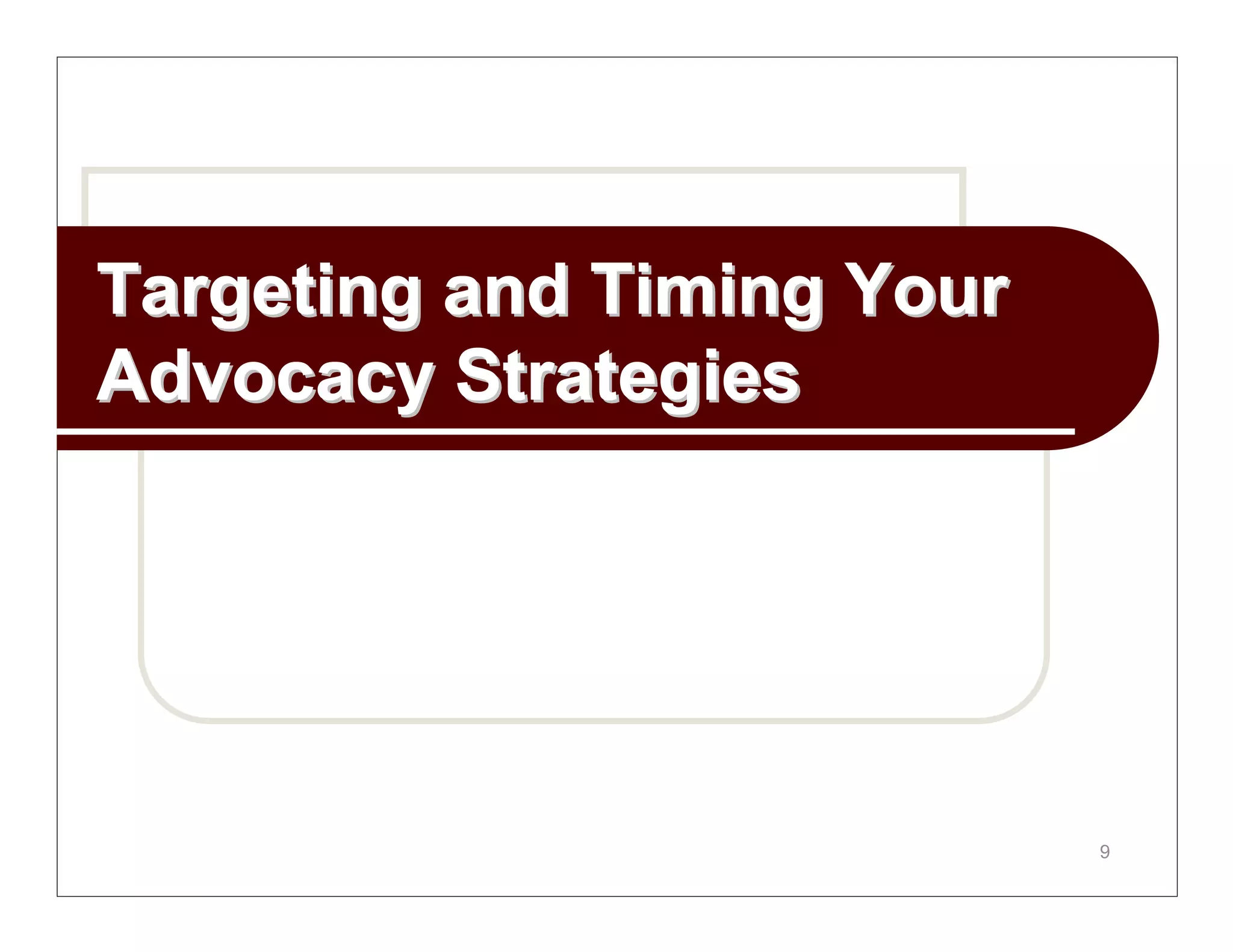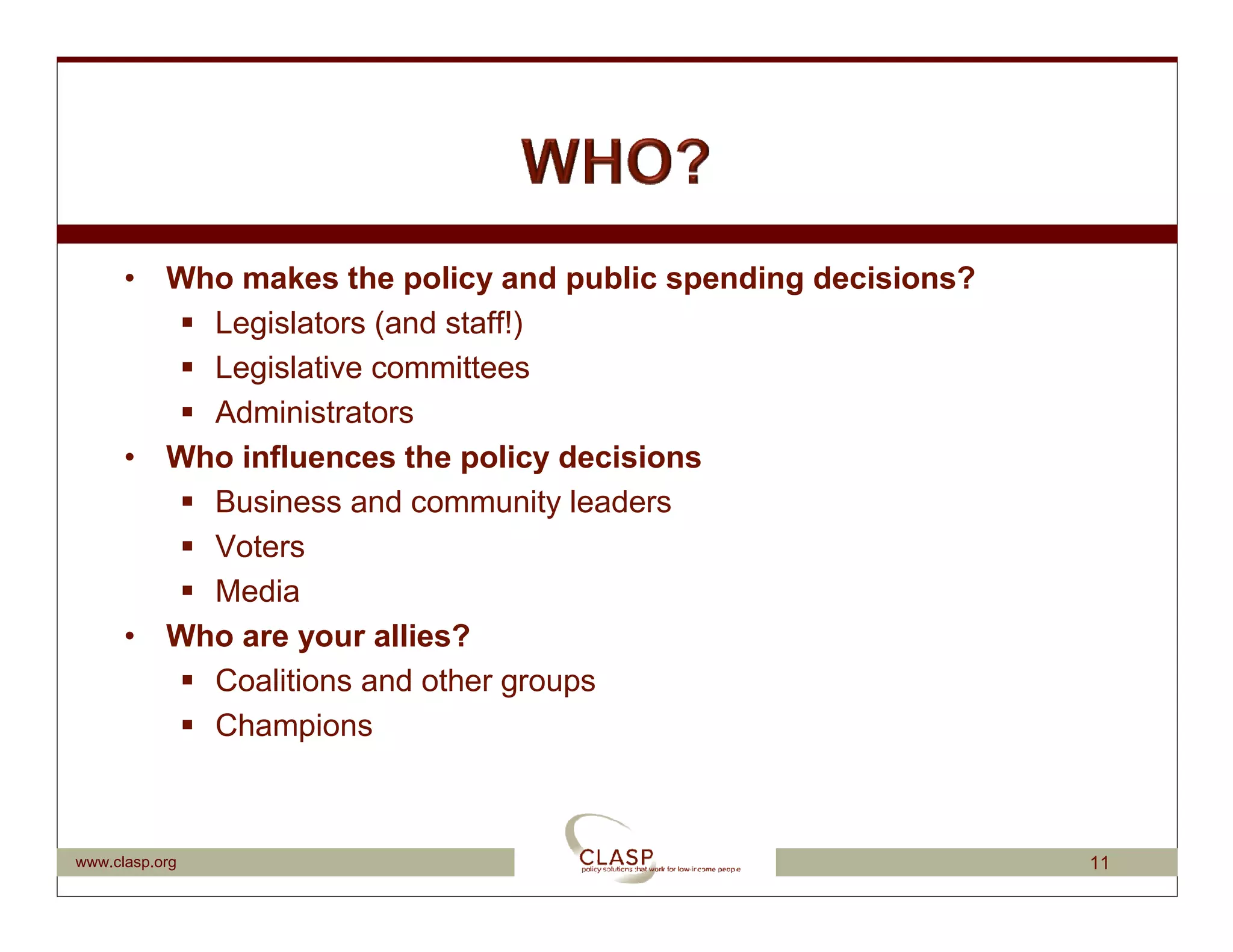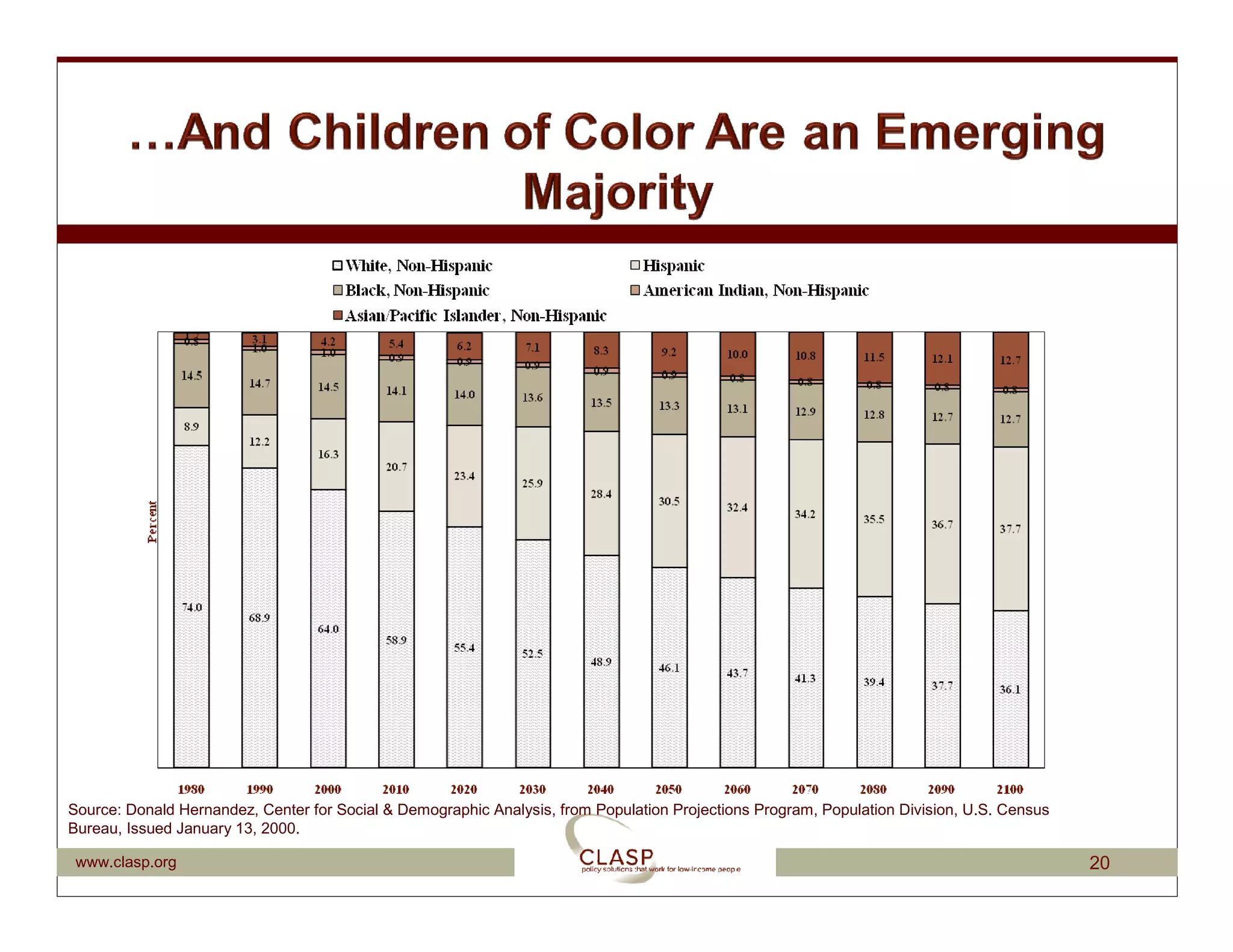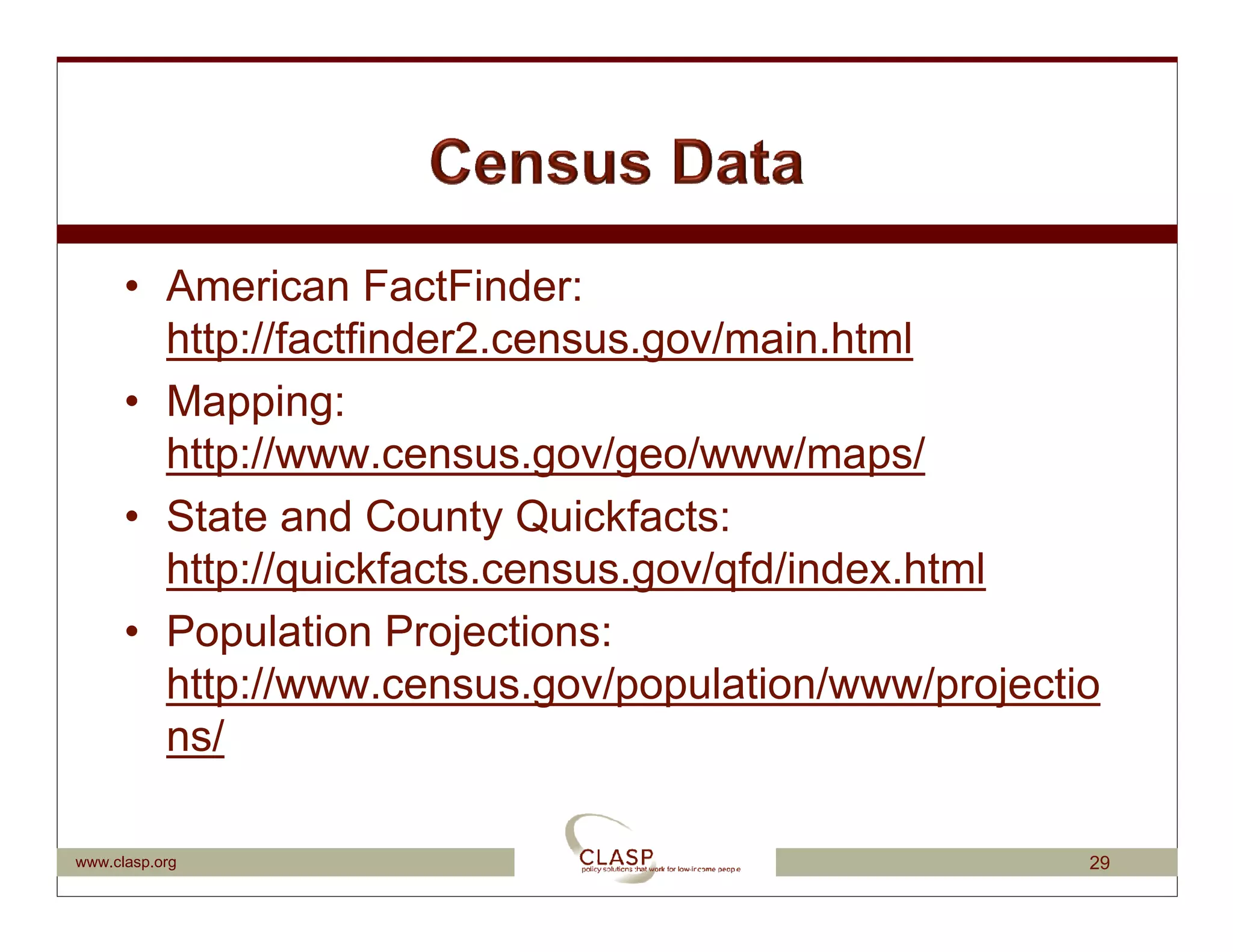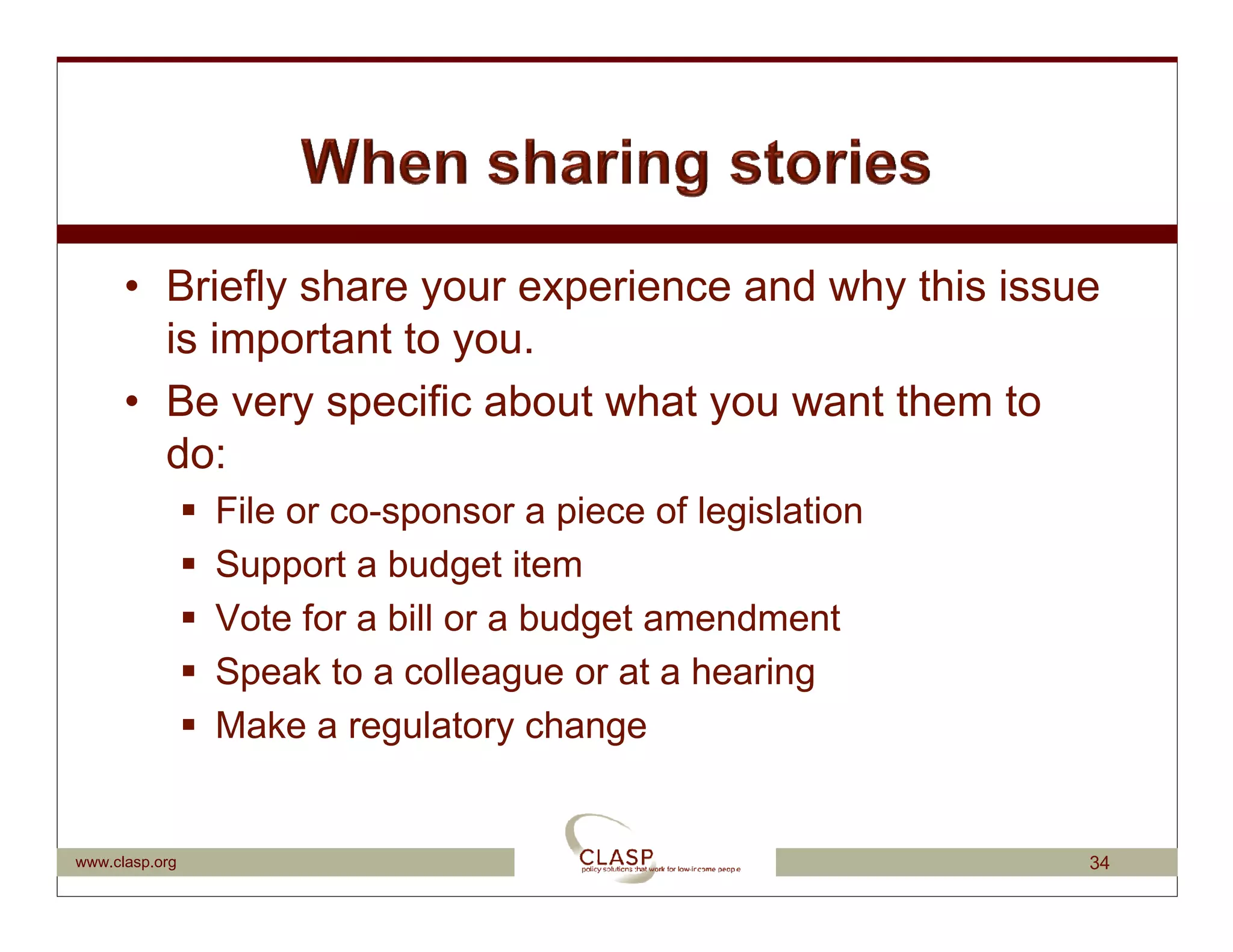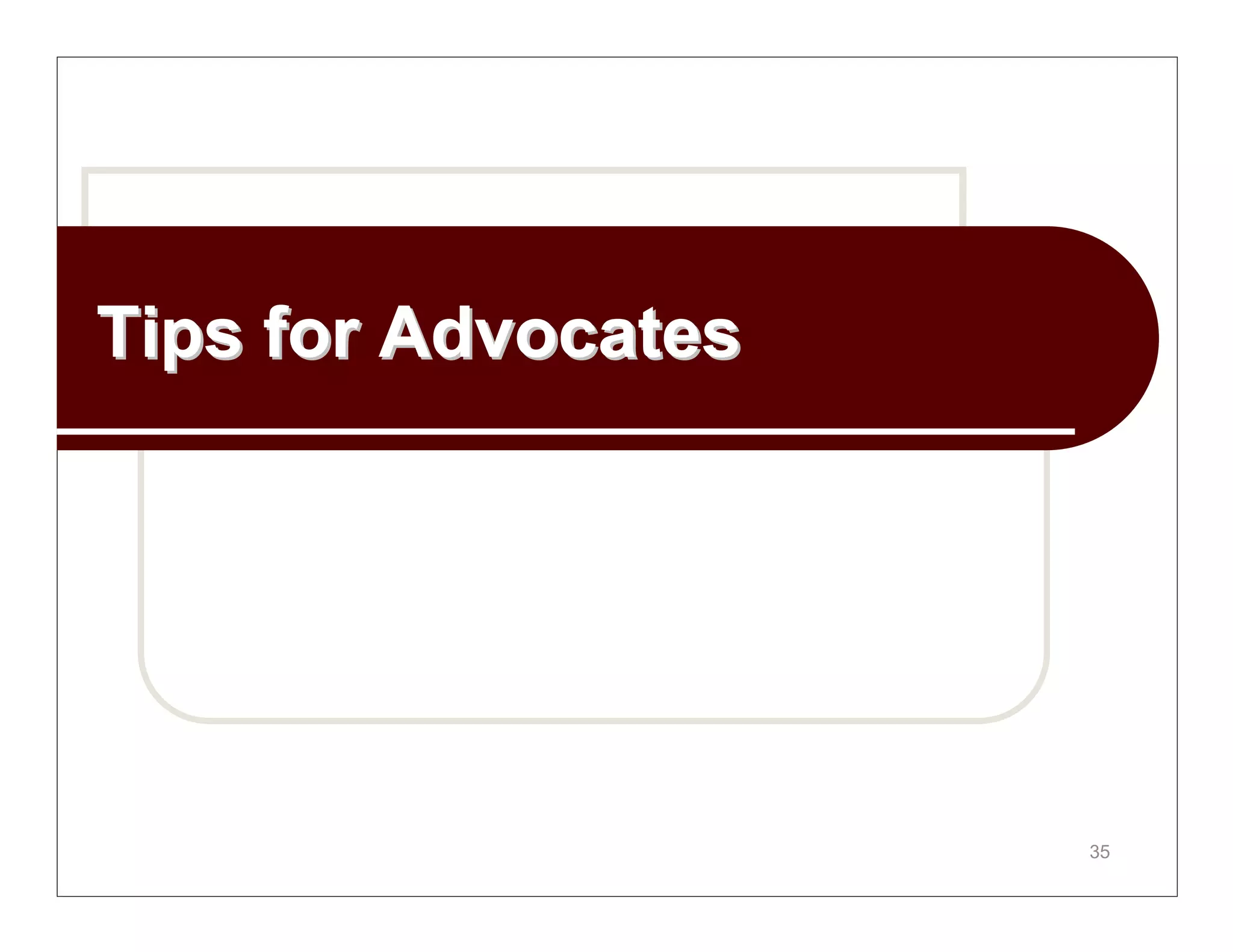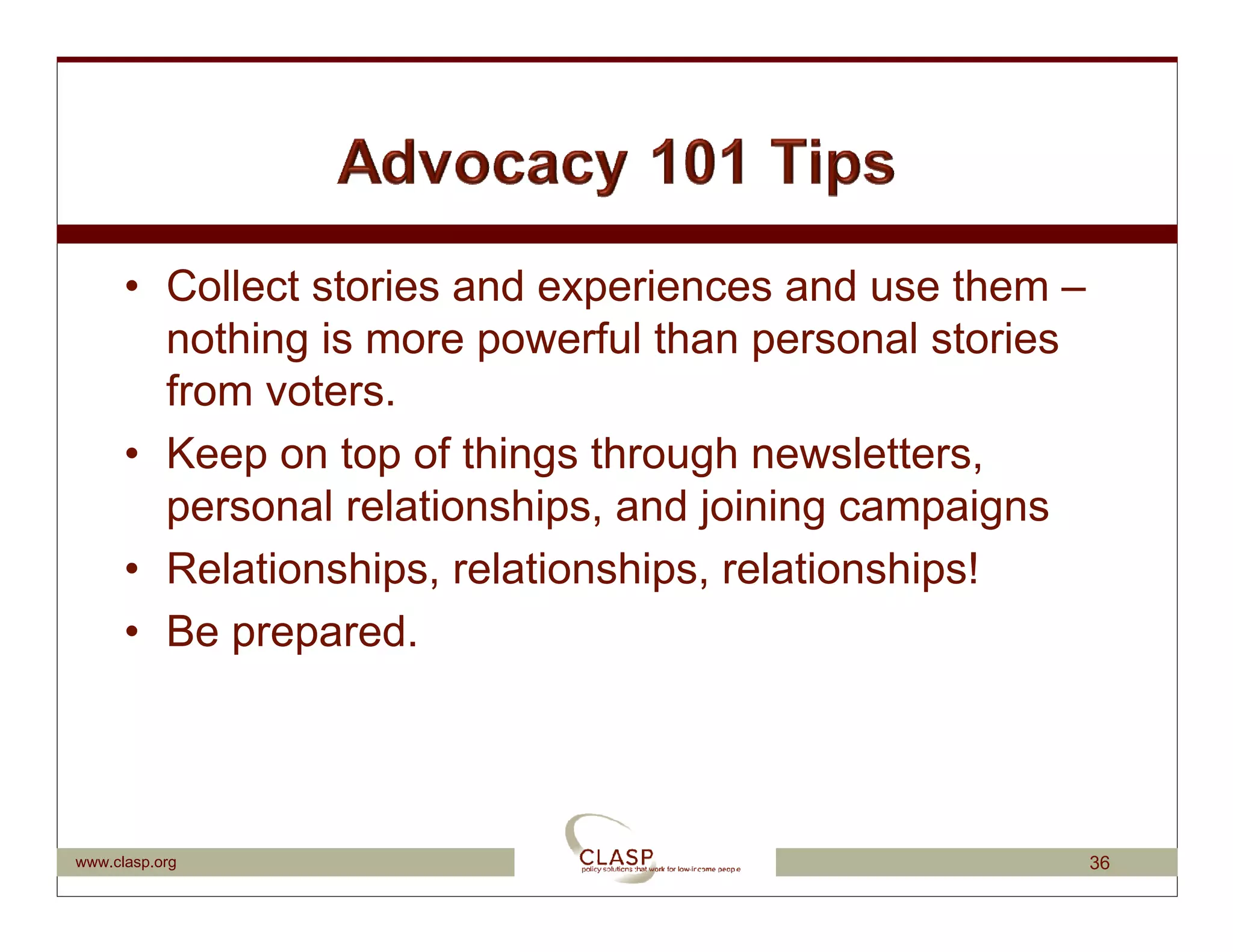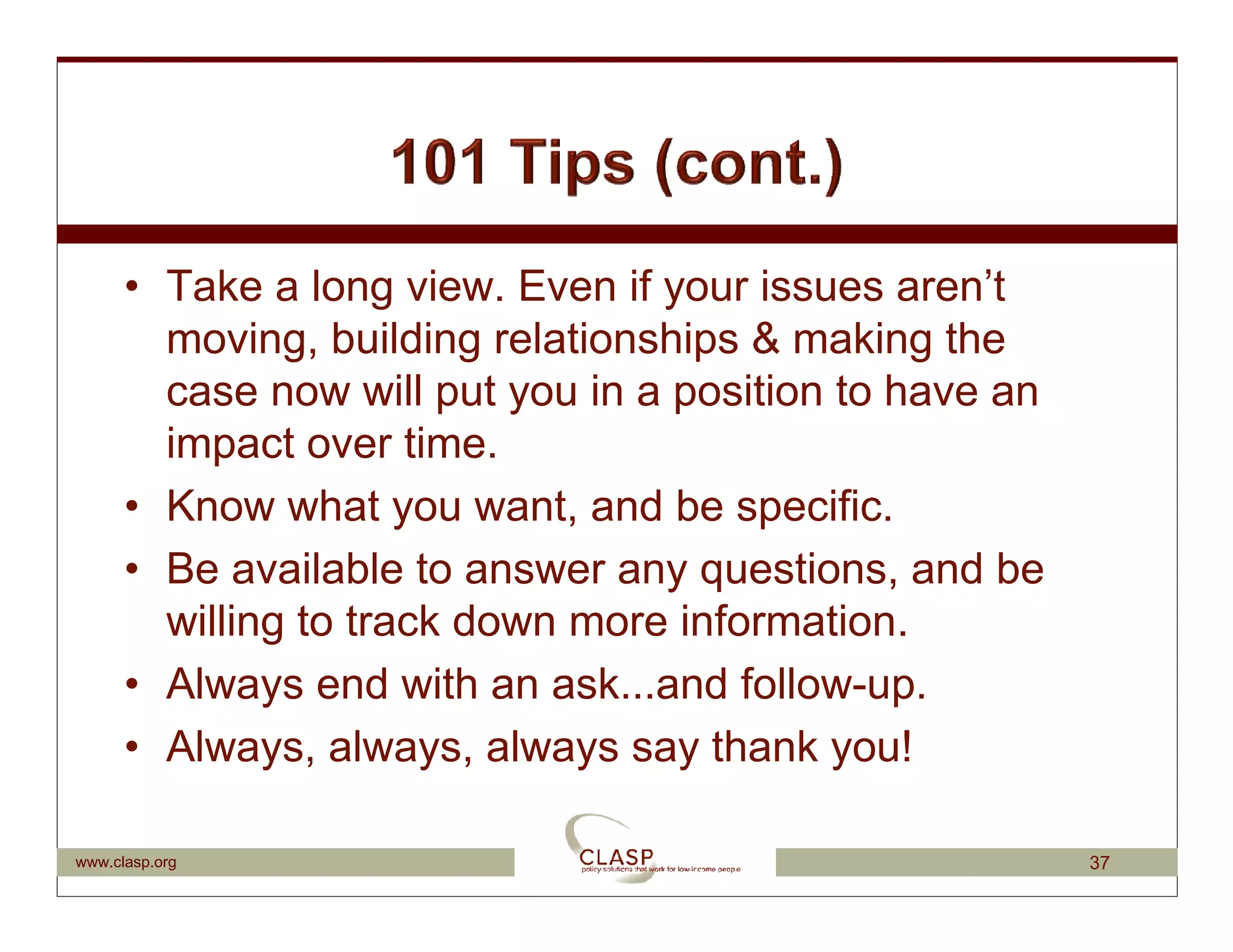The document provides guidance on effective policy advocacy for children and families. It reviews establishing clear policy goals, targeting advocacy efforts, using data and personal stories to make a case, and tips for communication, relationship building, and strategy. Data is presented on the demographics of low-income children, programs serving young children, and websites to find additional state-specific data for advocacy efforts.

